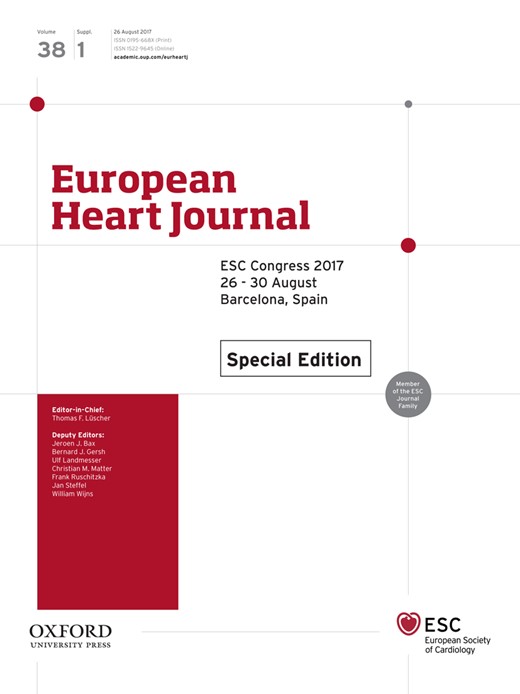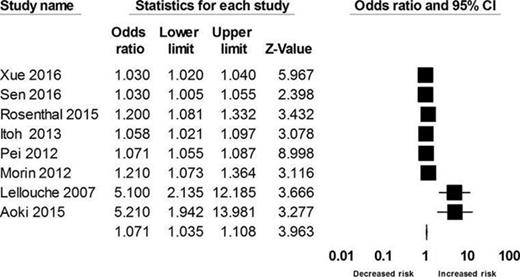-
PDF
- Split View
-
Views
-
Cite
Cite
K.H. Li, M. Gong, W.T. Wong, O.T.L. To, Y.S. Chan, B.P. Yan, S.H. Wong, W.K.K. Wu, T. Liu, G. Tse, P1480
Tpeak-Tend for risk stratification in heart failure: a meta-analysis, European Heart Journal, Volume 38, Issue suppl_1, August 2017, ehx502.P1480, https://doi.org/10.1093/eurheartj/ehx502.P1480Close - Share Icon Share
Background: Heart failure (HF) is characterized by impaired myocardial contractility leading to its inability to meet metabolic demands of peripheral tissues. Experimental evidence has implicated both structural and electrophysiological remodeling in its disease pathogenesis. The latter can be reflected by abnormalities in action potential repolarization, which corresponds to the T-wave on the electrocardiogram (ECG). The Tpeak – Tend interval has been used in several studies to predict adverse events such as ventricular fibrillation/ventricular tachycardia (VT/VF) and sudden cardiac death (SCD) in HF patients. However, its predictive value in risk stratification has been disputed.
Objectives: A systematic review and meta-analysis was performed to evaluate the overall value of Tpeak – Tend in predicting both SCD and arrhythmic outcomes in patients with HF.
Methods: A systematic literature search was performed using PubMed and Embase to identify relevant studies from the beginning of these databases up until October 2016. The inclusion criteria include human studies reporting hazard or odd ratios for VT, VF and SCD.
Results: 702 studies were initially identified from these databases, of which eight studies were found to be relevant to HF. One study further divided the groups into dilated cardiomyopathy and ischemic cardiomyopathy, which were therefore analyzed separately. A total of 1912 with a mean age of 65±7 years old and 70±11% male were included. The mean follow-up period was 21±14 months. The mean cut-off point for Tpeak – Tend was 106.3±8.4. All nine groups consistently reported a positive association between increased Tpeak – Tend and an increased risk of VF/VT or SCD (5 using multivariate analysis and 4 using univariate analysis). The pooled meta-analysis demonstrated that prolonged Tpeak – Tend interval was associated with approximately 1.07 times the risk of these endpoints (95% CI: 1.04 to 1.11, p<0.0001; Figure 1). I2 took a value of 88%, which suggests the presence of significant heterogeneity.
Conclusions: Prolongation of the Tpeak – Tend interval (>106 ms) is indicative of an increased risk of VF/VT and SCD in patients with HF. Since Tpeak – Tend can easily be derived from the ECG, it has the potential to be incorporated into clinical practice for risk stratification in patients with HF.
Acknowledgement/Funding: Croucher Foundation of Hong Kong




